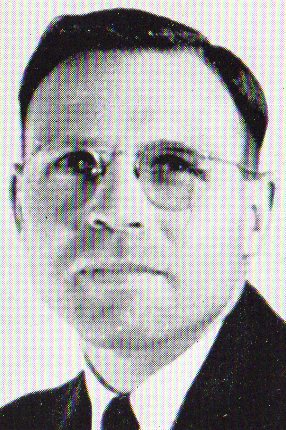Grossmont School District superintendent Lewis Smith was one of the most ardent advocates of what could have been termed the “Free San Diego” movement in the late 1950s.
Smith and other educational and school board associates wanted out of the vast Southern Section and were instrumental in formation of the tiny, 28-school San Diego Section in 1960.
The mere mention of “Grossmont” was music to Smith’s ears. The former Grossmont administrator naturally found no confusion in the name he selected for the league in which district schools would participate.
The circuit was known as the Grossmont League and, beginning in 1961, was the largest in the fledgling section.

EXPANDING
Two decades later the original seven-school alignment had grown to nine, having added Santana in 1965 and Valhalla in 1974.
Nine teams and eight league games were migraine-causing headaches for athletic directors and coaches charged with scheduling.
–A 10-week season allowed for only one pre-league game and one bye week.
–A mid- or late-season bye made it difficult and sometimes impossible to find opponents (Helix had to go on a long road trip to Dana Hills in the last week of the regular season).
–Grossmont basketball teams were forced to start league play ahead of the Christmas vacation, before the traditional start on the first Friday night in January.
But most nettlesome was a system that allowed the Grossmont only two berths in the San Diego Section playoffs, especially when compared to their County counterpart.
METRO REALIGNED
The Metropolitan League also had experienced growing pains, but in 1981 split into Mesa (large) and South Bay (small) leagues of five teams each under the Metropolitan Conference umbrella.
The move guaranteed the Metro four playoff berths in the 3-A and 2-A divisions, which were created to best address fluctuating school enrollment numbers and athletic performance.
The two Metros were getting 25 per cent of the 16 San Diego Section 3-A and 2-A entries. The Grossmont, competing only in 3-A, received 12.5 percent.
“We have the longest league season in the County,” said Granite Hills coach Paul Wargo. “Every game counts. There are other schools who only have to worry about four league games.”
“We need a 2A-3A situation,” said Grossmont coach Lynn Cole on the eve of the first league game.
The Grossmont might have gone to 10 teams and separated into two, five-squad alignments had Christian joined in 1978, but a proposal did not pass.
“There are real inequities in our league (in enrollment and in athletic success),“said Helix coach Jim Arnaiz. “But back a few years ago, when there was discussion, the straw vote always came out 5-4 against splitting. It’ll take some real concern to get the interest up again and I don’t hear that concern.”
FIRST LOSER IN POSTSEASON
The level of concern heightened for the Helix mentor and others in the Grossmont hierarchy when they saw that Bonita Vista, with a 3-7 record, but second in the Mesa League, was going to the postseason.
Something needed to be done.
Helix and Granite Hills, each with an 8-2 record, were not in the playoffs.
Mount Miguel, 9-1, and Monte Vista, 8-2 with wins over Helix and Granite Hills, were the Grossmont representatives.
Bonita Vista meanwhile became the first losing team so anointed in the section’s 25-season history.
With cooperation of the CIF board of managers, the East County schools were able to solve the problem after addressing the issue for the first time in three years.
The nine schools divided in 1985 and managed to not change names, becoming the Grossmont 3-A and Grossmont 2-A leagues.
Lewis Smith smiled from high above.
